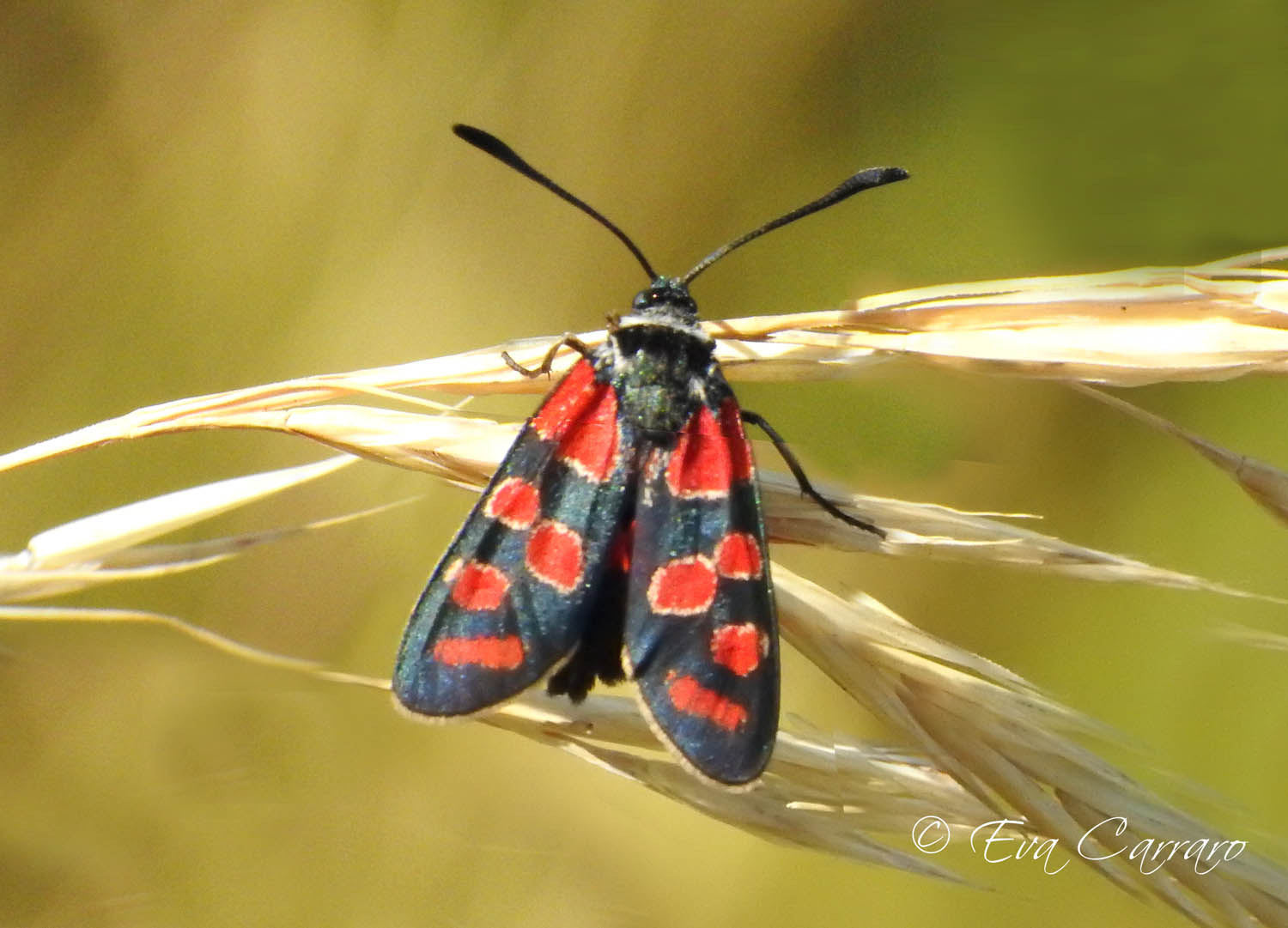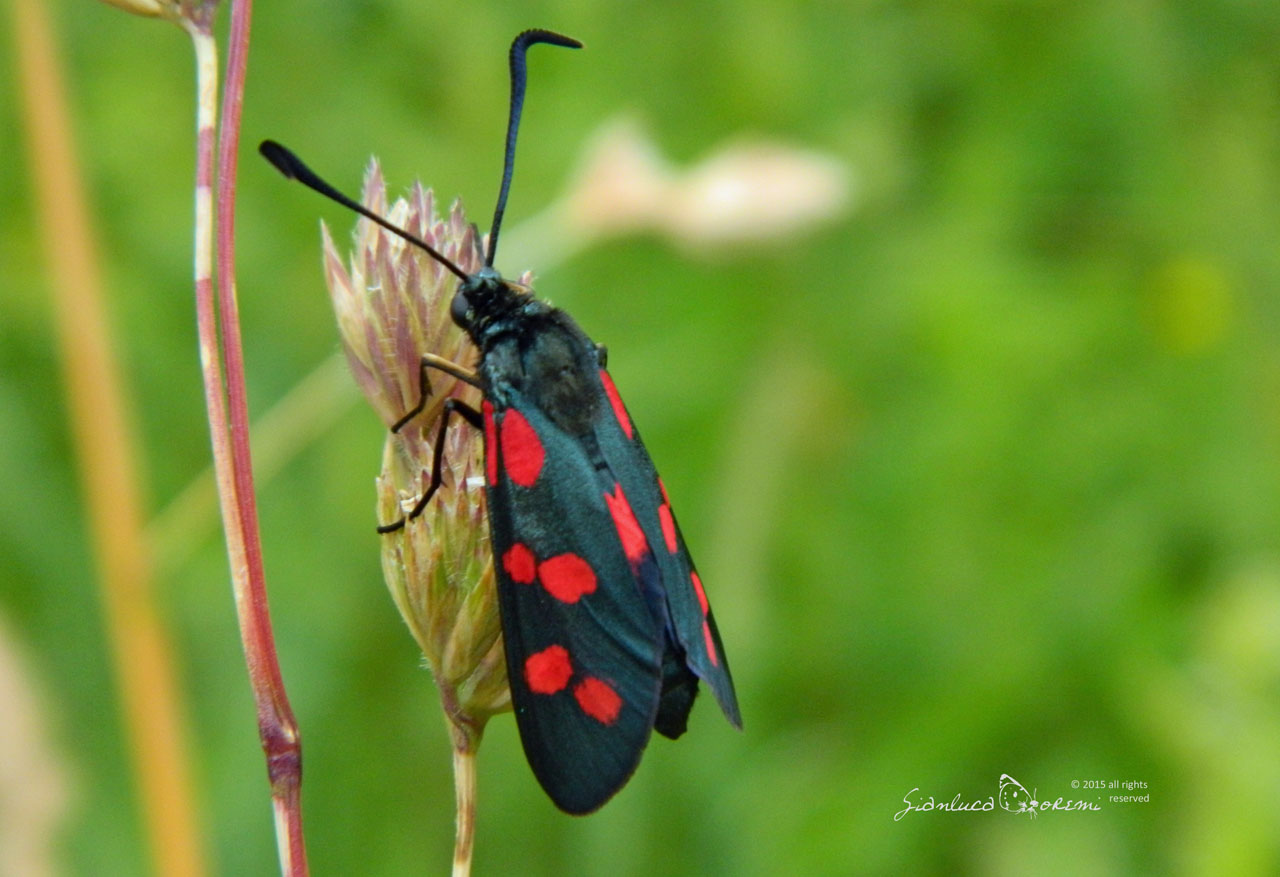Zygaenidae
Latreille, 1809
The Zygaenidae are a family of moths in the order Lepidoptera of the superfamily Zygaenoidea .
The Zygaenidae family is made up of about 1000 species in the world.
These moths have predominantly diurnal habits, and usually have a slow flight. The livery often has a metallic sheen with red or yellow spots.
The bright colors of Zygaenidae are for predators (aposematism) to warn them of their unpleasant taste.
In fact, these moths contain hydrogen cyanide (HCN) in their bodies at all stages of their life cycle.
Unlike most insects that they get the glycosides from plants an can be used as a defense * the Zygaenidae
they are able to independently produce and synthesize hydrogen cyanide (HCN), when they are in an environment poor in plants producing these toxins. **
As mentioned, hydrocyanic acid is also present in the larvae, and the caterpillars of two subfamilies, the Chalcosiinae and Zygaeninae ,
they have cavities in which they store cyanide and can expel it as defensive droplets. ***
* The Lepidoptera: Form, function and diversity. Oxford Univ. Press.
** Capinera, John L. (2008). Encyclopedia of Entomology. Springer Science & Business Media. ISBN 978-1-4020-6242-1.X
*** Niehuis, O., Yen, S.H., Naumann, C.M. & Misof, B. (2006). "Higher phylogeny of zygaenid moths (Insecta: Lepidoptera)
inferred from nuclear and mitochondrial sequence data and the evolution of larval cuticular cavities for chemical defence." Molecular Phylogenetics and Evolution 39(3): 812-829.

 EN
EN ITA
ITA


Social and publications